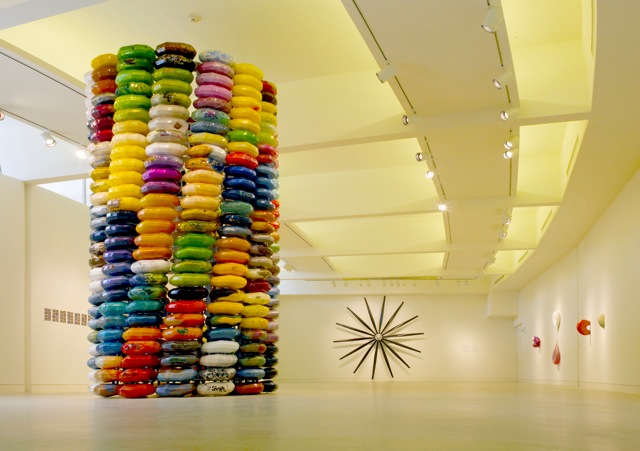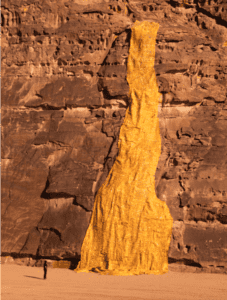September 15th – October 27th, 2012
William Turner Gallery is to present Eric Johnson: Monochromicorn.
California art is often about materials, science and light…as it probably should be. We are the state that is home to Jet Propulsion Laboratories and the countless advances in materials and technologies that have been the result of the aerospace industry. California is also a hotbed for automotive enthusiasts, and countless car clubs call the state home. Eric Johnson’s artwork has been informed by these industries; a marriage of aerospace science and hot-rod culture, while paying homage to the art movements that are uniquely Southern Californian.
Johnson has spent four decades working with polyester resin. As often was the case for many artists working in the 1970s, industrial products found their way into Johnson’s early studio practice and have remained there ever since. “I’ve translated all that automotive knowledge into making my artwork,” he says, “I use the full array of auto tools and pigments.”
Eric Johnson’s work does not fit neatly into the traditional classifications of resin-based California art, though the Finish Fetish movement best describes his studio practice. He was a friend, student, and later a fabricator for the late Craig Kauffman and Johnson credit’s Kauffman’s friendship and patronage as a influencing factor of his own work.

The Maize Project: Eric Johnson
Johnson’s work is more informed by Finish Fetish than its sister movement Light and Space. Though his work does embrace some of the same dialogue as a Robert Irwin, or James Turrell; Johnson’s works are less ephemeral and much more immediate than those typically associated with Light and Space artists. While many works of this movement are often delicate in sensibility and work in conjunction with their surroundings, Johnson’s colour changing metallic paints, and undulating surfaces have a much more aggressive stance. They tend to invade your space and demand more rigorous contemplation.
William Turner Gallery will feature several ambitious new works by Johnson, and will also be exhibiting the monumental, conceptually based sculpture entitled “The Maize Project.” This piece has never been exhibited in a gallery setting and was previously on display at the Torrance Art Museum. During the course of the exhibition Johnson will grant several individuals the honor of collaborating with him on the “Maize Project” at the William Turner Gallery. Video footage from this event will be made available to the press. Accompanying the Maize Project will be several other conceptually based works examining themes that are particularly relevant in this political season such as campaign finance reform and alternative energy sources.
The “Maize Project” abstractly represents a lodge pole like structure. In the Native American culture, the lodge pole is a gathering place. The title, and shape are a reference to a section of maize corn.
For Johnson, this is both a reference to his personal Native American heritage and to the significance of corn to the world. The piece is assembled from more than 300 individually cast polyester resin units – “kernels”, as he calls them. The Kernels were made in Johnson’s studio with various artists, friends and community members in assistance. The communal project took several years to complete. Participants were invited to select resin colors, sequencing of pours, and incase small objects or messages into the kernels. Customization ranges from the light hearted (candy corn for example) to the profound (baby teeth of a lost child, a bullet for Johnson’s father, and even some that were made by people who have now passed away).
Eric Johnson received his Master of Fine Arts degree from the University of California, Irvine. He has been featured in exhibitions at the Los Angeles Municipal Art Gallery, The University Art Gallery at UC San Diego, and the Laguna Art Museum in Laguna Beach. In 1996, he received an Individual Support Grant from the Adolph and Esther Gottlieb Foundation. Numerous private collectors as well as corporations including CBS, Hewlett Packard, Dark Horse Entertainment, and Xerox own his work.







